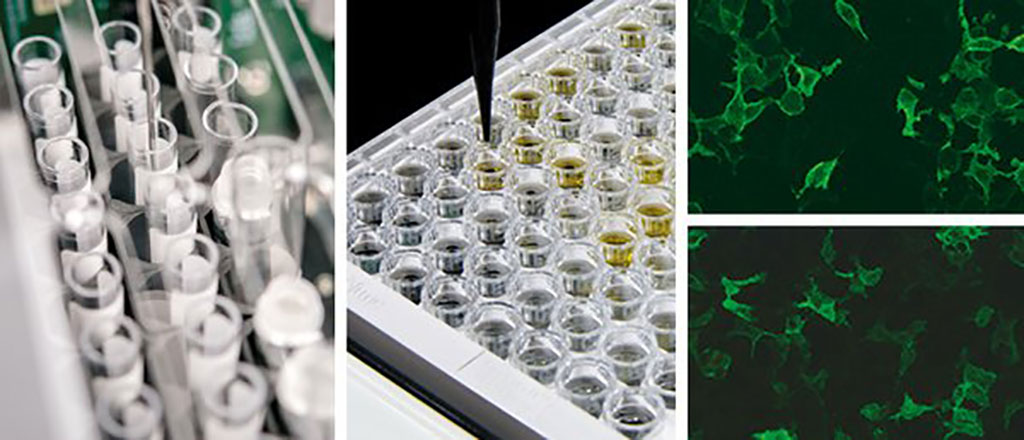Serological Biomarker Aids Diagnosis of Rare Kidney Disease Without Biopsy
Posted on 15 Jun 2022
Primary membranous nephropathy (pMN) is a chronic inflammatory kidney disease that can lead to kidney failure. Antibodies against PLA2R (phospholipase A2 receptors) occur with a prevalence of 70 to 80% and a specificity of over 99%. Anti-PLA2R have been recognized as a significant serological biomarker for the diagnosis of pMN in the new guideline from the KDIGO (Kidney Disease: Improving Global Outcomes). Diagnosis of pMN can now be made without biopsy if the serological marker anti-PLA2R is present alongside the clinical symptoms.
Antibodies in pMN can be determined using exclusive test systems from EUROIMMUN (Luebeck, Germany), a PerkinElmer, Inc. (Waltham, MA; USA) company. As well as aiding diagnosis, measurement of anti-PLA2R is also used to assess the activity and progression of pMN. Phases of clinical remission and relapses are typically preceded by a respective change in the antibody titer. The antibody concentration is one of the criteria used to assess the risk of progression to renal failure. Anti-PLA2R determination is suitable for assessing responses to immunosuppressive therapy. According to the guideline, the antibody concentration should be measured three or six months after the start of therapy. The determined value serves as a basis for maintaining or adjusting the current treatment.

The predictive value of anti-PLA2R antibodies is also relevant for assessing pMN patients undergoing kidney transplantation. High antibody titers before a transplant indicate a high risk of relapse. After transplantation, regular determination of the antibody level helps to predict possible relapses early, allowing prompt intervention. In addition to anti-PLA2R, autoantibodies against thrombospondin type 1 domain-containing 7A (THSD7A) also occur in pMN at a prevalence of 2 to 5% and a high specificity. As they primarily occur in anti-PLA2R-negative pMN patients, they play a complementary role in pMN serodiagnostics.
EUROIMMUN’s indirect immunofluorescence test (IIFT) enables qualitative to semi-quantitative detection of anti-PLA2R or anti-THSD7A antibodies using transfected cells expressing the corresponding antigen on their surface. Anti-PLA2R antibodies can be measured quantitatively using ELISA or chemiluminescence immunoassay (ChLIA) based on recombinant receptor. The quantitative measurement is highly suited to disease and therapy monitoring and can be performed efficiently at high throughput. The IIFT, ELISA and ChLIA procedures are all automatable.
Related Links:
EUROIMMUN
PerkinElmer, Inc.














